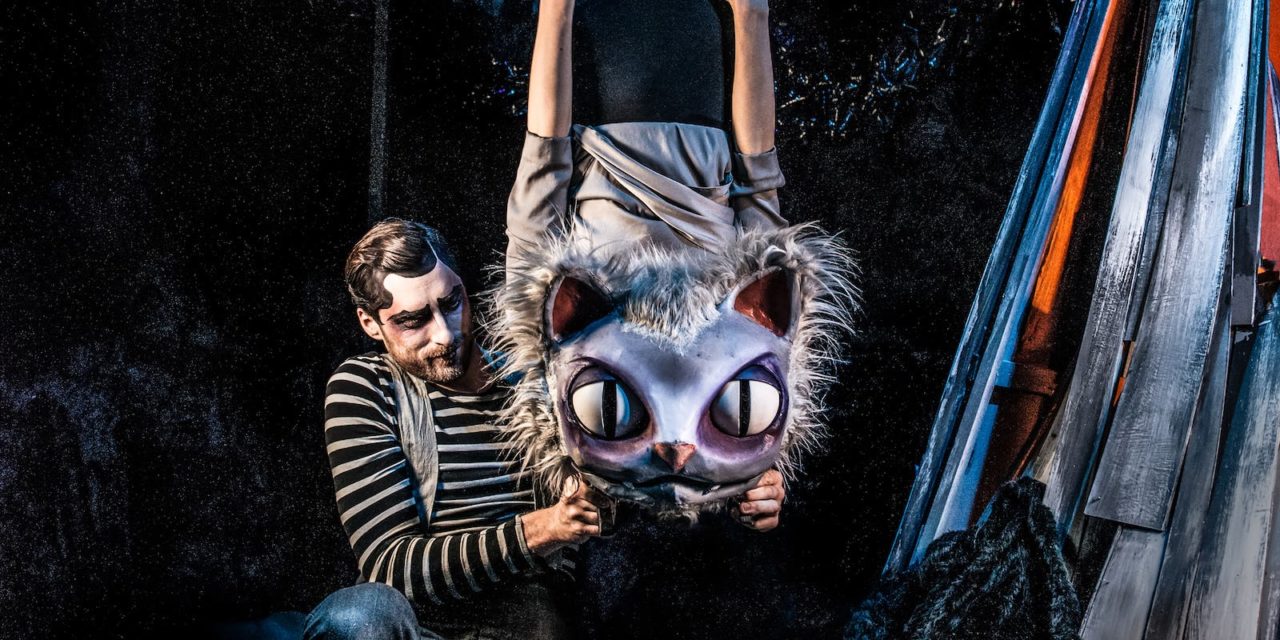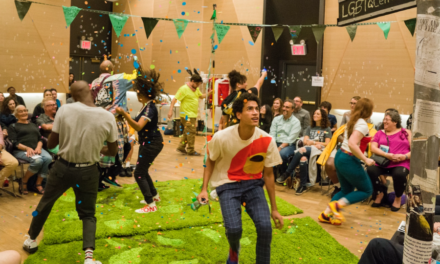“Drink me” or “Eat me.” Like Neo, in The Matrix, you are presented with a simple dichotomy that will have immediate consequences in your reality. In the acclaimed Alice’s Adventures Underground this choice will determine your suit—diamonds, hearts, spades or clubs—and your suit will, in turn, set your path for your adventure.
It is indeed your adventure; while this stunning immersive theatre experience is based on Alice’s Wonderland, this is the audience’s adventure. Les Enfants Terribles have thus broken the general model in which immersive theatre treats the audience as mere spectators, voyeurs in a theatrical world. The immersive theatre has explored with several forms in which the audience follows the action in a theatrical space, or where the audience is guided through narrative and space but still holding a passive role. While Alice’s Adventures Underground is not an interactive show (the only choice you’ll be presented with is whether to eat or to drink), the audience’s journey is what fuels the plot. Alice is still there but this is not about her, she is just the base thread in what soon is revealed to be a rich pattern of interwoven stories— each yarn, an audience member’s individual story.
The key to this result lies in that the main events in the action happen to the audience, instead of the main characters. As a spade, for instance, you break the Queen’s law by eating a tart. Simultaneously, and without the spades knowing, the diamonds watch this crime through holes in a wall. The characters in the show act as guides, leading your experience, but the audience is the final recipient of what happens. And while your interactions may not have an impact on the development of the story, your in-group identity is effectively activated through the close interaction with your guide and other characters, some of which will even remember your name.
As simple as Humpty Dumpty remembering your name may seem, in a production where six audience groups are simultaneously in Wonderland but at different points in their stories, and where actors play four characters in a given night, is a logistical feat. Behind this impressive coordination exercise lies a strong dramaturgy that has created four compelling linear narratives that work on their own, cross at key moments, and put together make up a greater story where each suit has played a part in the holistic story. This combined effect reaches a new level of theatrical experience that cannot be experienced in the regular non-immersive theatre, where events must happen linearly even if the dramaturgy is not linear.
Another realm in which Alice’s Adventures Underground sets new standards is in its exploration of different vocabularies. Movement and stage design have been historically associated with immersive theatre, associated to groups such as Punchdrunk and Third Rail Projects (which also created a Wonderland-based immersive play, Then She Fell). In Alice’s Adventures Underground, a rich visual world is combined circus, illusions, and puppetry, excelling integrating all these art forms in a way that inspires what immersive theatre can offer. And while immersive productions tend to decrease in the quality of their dialogue because of the challenges of interacting with an audience while keeping true to a story, Alice’s Adventures Underground is proof that spoken dialogue can work in a complex net-like immersive experience.
The wondrous world of Lewis Carrol is a fertile ground for artistic exploration, for taking creative risks and pushing the boundaries of what is a dream and what reality. Alice’s Adventures Underground is true to its source material in giving a marvelous, intricate production that bends the rules of possibility and imagination.
https://www.youtube.com/watch?v=m-NsDiqRBVI
Alice’s Adventures Underground runs until September 23rd, 2017, in The Vaults.
This post was written by the author in their personal capacity.The opinions expressed in this article are the author’s own and do not reflect the view of The Theatre Times, their staff or collaborators.
This post was written by Aida Rocci Ruiz.
The views expressed here belong to the author and do not necessarily reflect our views and opinions.


















